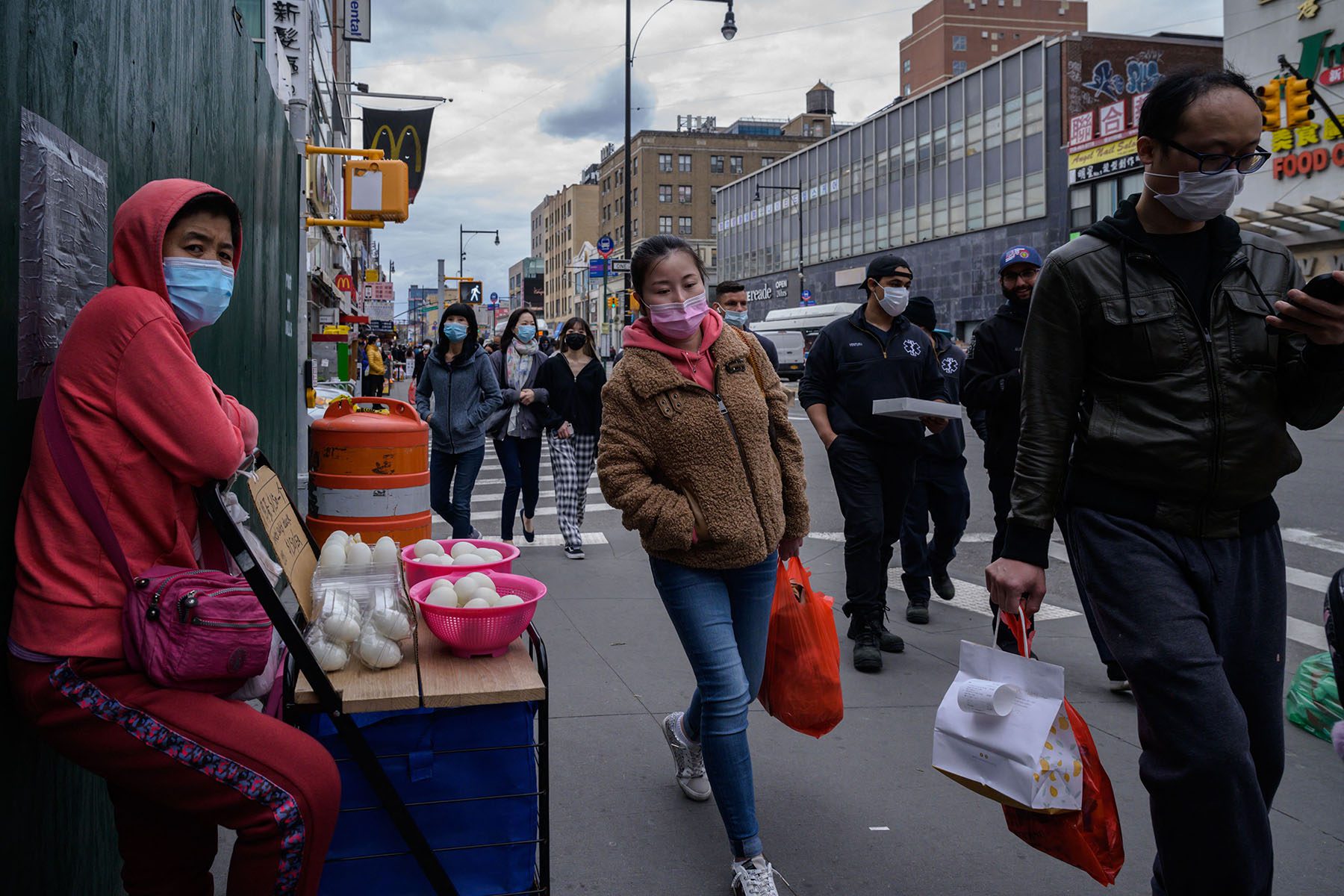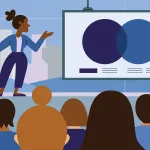We’re telling the untold stories of women, women of color and LGBTQ+ people. Subscribe to our daily newsletter.
Sparse economic data on Asian-American, Native Hawaiian and Pacific Islander women has painted an inaccurate reality of economic well-being and hampered communities’ efforts to address disparities. It’s an issue that Wednesday’s AAPI Women’s Equal Pay Day attempts to spotlight.
On average, AAPI women earn 80 cents for every $1 earned by White men when looking at both full- and part-time workers, more than any other racial group of women.
But that figure obscures the harsher realities faced by Southeast Asian, Native Hawaiian and Pacific Islander women, who see some of the largest wage gaps in the country. The 80 cent average captures an enormous range: Taiwanese women earn more than White men, about $1.08 for every White man’s $1, while Nepalese women earn 48 cents on the dollar. The AAPI umbrella encompasses the varied experiences of people across continents and oceans, missing the unique experiences of those communities in the United States.
Stereotypes about AAPI communities have undermined efforts to make the case for better data collection, said Yvonne Hsu, the chief policy and government affairs officer for the National Asian Pacific American Women’s Forum.
“The ‘model minority’ myth that has been assigned to our community — that Asians do well and Asians are successful — when you look at the numbers disaggregated by ethnic groups, you can just see that is just flat out not true,” Hsu said.
In reality, AAPI women are overrepresented in low-wage work. They are 3.8 percent of frontline workers though they are 2.9 percent of the overall workforce, according to a study by the National Women’s Law Center. They also work disproportionately in health care, service and retail jobs, salon and nail tech positions and as personal care aides, including as hairdressers and child care workers. And in those jobs, they typically earn less than their White male counterparts, said Jessica Mason, a senior policy analyst with the National Partnership for Women and Families.
“And on the other hand, they are underrepresented in a lot of higher paying jobs, or within those jobs, maybe they have some entry into STEM fields, but they really face a lot of barriers to advancing into higher levels of those fields,” Mason said.
Even when they do have access to higher paying jobs, discrimination — gender, racial or both — blocks them from advancing, Mason said.
But because sample sizes in national surveys are so small, it’s hard to disaggregate that data further to understand exactly which jobs, rather than larger job categories, communities are working in. It gets even harder to do when you layer gender, as well.
Part of the challenge is ensuring that surveys are in a multitude of languages and that community organizations and the U.S. Census Bureau have the resources to do appropriate outreach. The other part, Mason said, is combating fear within those communities to interact with the federal government.
“The problems with discrimination and xenophobia that a lot of AANHPI women in their communities are experiencing [is part of it], because for communities that are being especially targeted right now for anti-Asian hate and and other forms of discrimination, being presented with an official survey might in itself be a little bit scary if you're not sort of sure what it is or whether it's trustworthy,” Mason said.
In the data that is available, it’s clear many AAPI women are also breadwinners who live in multigenerational households, responsible for both child care and elder care. About 56 percent of AAPI mothers are primary, sole or co-breadwinners in their families. But many work in jobs with little access to paid leave, health care or time off.
There is also some evidence that cultural norms and immigration status may play a role in depressing wages.
How communities arrive in the United States, what benefits they have access to and what the pathway to citizenship looks like helps determine their economic outcomes. Chinese and Indian immigrants who came to the United States after immigration laws loosened in the 1940s and 1950s under visas set aside for “high-skill” workers see close to no wage gap today. Vietnamese and Cambodian immigrants who came to the United States as refugees, many of whom were low-wage before moving, face significant gaps. And language matters, too: Indians and Filipinos had access to English education as former British and American colonies and now face fewer barriers, according to an analysis by the Economic Policy Institute.
It bears out in the numbers. Chinese women earn 83 cents on the White man’s dollar, Indian women earn $1.07 and Filipino women earn 79 cents. Vietnamese women earn 56 cents and Cambodian women earn 63 cents.
“With immigrant communities often what opportunities or connections the first few groups of immigrants or refugees might have access to is sort of what they are then able to connect the next group of people to,” Mason said.
Nepalese women, who have one of the largest gaps of any group of AAPI women, are highly concentrated in nail tech positions. Overall, about 70 percent of manicurists and pedicurists are Asian American.
Pabitra Dash, a senior organizer at the Adhikaar Center in Queens, a community organization that represents about 1,400 Nepali-speaking nail salon techs, said part of the reason they work those jobs is existing networks and part of the reason is cultural. Husbands, boyfriends and partners are not threatened by nail tech jobs because the clientele is largely women, and that job is considered appropriate for women, a reflection of traditional gender norm culture in Nepal.
“My husband encouraged me to work in the industry because I’m working with women — he is so secure,” she said.
Many also don’t speak English, which relegates them to less desirable jobs at smaller salons where the pay and tips are lower. Language barriers also impact the quality of tips workers get from their clients, Dash said.
It’s part of why the Adhikaar Center led the charge to pull nail techs in New York City out from under a tipped wage classification that meant they were paid less than minimum wage with the expectation that tips made up the rest. Although they were successful, many salons have now reduced workers’ hours to comply with the $15 an hour minimum wage.
It’s common then, Dash said, for techs to work second jobs cleaning their clients' homes, for example, to make some extra income. Almost none of the positions they work in offer benefits, setting women back long-term.
“What is their retirement plan? Nothing. What is their health insurance? Nothing. What is their [access to] health and safety [regulations]? Nothing,” said Dash, who is working to pass a bill in New York that would create a council of nail salon workers to develop minimum standards for the industry.
It’s a similar story for Southeast Asian women, many of whom came to the United States as refugees and now work in low-paid sectors with few benefits, but where English language requirements are lower, such as manufacturing and service jobs, said Kham Moua, the national deputy director of the Southeast Asia Resource Action Center, a national civil rights organization advocating for Cambodian, Laotian and Vietnamese American communities.
Most immigrants from those countries came as refugees or as the families of refugees to the United States, typically very low-income and with little to no formal education or English-speaking ability. In particular, those who came after the Cambodian genocide in the 1970s, which targeted educated professionals, academics and largely men, were often single, low-income mothers who spoke little to no English, Moua said.
That history is part of the reason Southeast Asians also have some of the lowest rates of educational achievement among Asian Americans, while also facing significant mental health challenges.
“Populations that started in poverty and continue to live in poverty generally have a hard time getting out,” Moua said.
For those communities, culture also plays a role in the positions women take. Southeast Asian Americans have the largest average family size of any AAPI group at nearly 5 people on average, suggesting high rates of multigenerational living. Care work is still seen as traditionally women’s work, but women are also expected to hold jobs while caring for family. Because child care and elder care are so expensive and inaccessible to so many communities, that puts up guardrails regarding what types of jobs women can take.
“That is also seen with the way that the daughters in some of these communities are treated, as well — things like going to college close to the home so they can still continue to do some of the home care work,” for example, Moua said.
Creating pathways for those women workers to enter into other jobs and into higher-paying positions is a multi-pronged challenge. There is the underlying gender discrimination that has stagnated all women’s economic advancement. In 20 years, the gap has barely narrowed because gender discrimination in the workplace is still so pervasive.
But layer race, language and culture on top of that and solutions are even less clear. Businesses can’t address their pay gaps if they don’t know why the gaps exist in the first place.
That’s especially difficult for Native Hawaiian and Pacific Islander (NHPI) women, said Estella Owoimaha-Church, the executive director of Empowering Pacific Islander Communities, a nonprofit that works to advocate for Pacific Islanders in the United States. The organization has been involved in designating a separate day for NHPI women to highlight how significant their gap is compared to other Asian American women.
“We don't have access to strong disaggregated data,” Owoimaha-Church said. “I actually can’t say anecdotally why our pay continues to be so much lower because I don't think in most professions or career spaces we are even seen as Native Hawaiians and Pacific Islanders. If I ask a Fortune 500 company why you pay your PI women less than everyone else, I imagine the answer would be, ‘PI? Who's that?’”
A study of the 2020 census by the nonprofit Asian Americans Advancing Justice found that despite an overcounting of the AAPI community nationally, states and localities were still undercounting AAPI people. NHPI people, in particular, were likely undercounted in states in the upper Midwest, Northeast and the South, and in communities like Hawaii and Los Angeles where they are heavily concentrated. San Francisco Unified School District passed a resolution in 2020 to direct more services and staff to NHPI students after it was clear many students were being undercounted.
Owoimaha-Church herself is Nigerian and Samoan, and she said she doesn’t show up in the NHPI data, but rather in the multiethnic data.
Based on anecdotal evidence, many NHPI women work in service industry jobs, at airports, in nursing positions and in community advocacy, Owoimaha-Church said. They have limited access to higher education and many households are also multigenerational.
Immigration and country of origin plays a major role in access to benefits and citizenship. People from Guam, the Northern Mariana Islands, and Hawaii are U.S. citizens with full access to benefits, while people from the Federated States of Micronesia, the Republic of the Marshall Islands and Republic of Palau can work in the United States legally, but aren’t considered citizens and have limited access to benefits. American Samoans qualify for most benefits and can work legally in the United States, but must obtain citizenship to get access to full benefits. Other immigrants need to apply for legal permanent resident status to work and live in the states and have to wait five years to apply for public benefits.
Understanding what sets NHPI women back is understanding that they are facing “a multitude of layered oppressions,” Owoimaha-Church said. “We live these intersectional lives and it’s that stacked on or layered with not having language access to different resources.”
Unraveling those realities will be crucial to helping NHPI women prosper, she said. So will questioning why these groups of women are so far behind their Asian women counterparts in the first place.
“What happens when we frame the conversation differently? Not about chasing where a White man is” she said. “I struggle with justifying continuing to frame the conversation in this way. Since we are dealing with the lack of equitable data disaggregation, my first thought is, ‘PI women compared to Asian-American women and what is that disparity and how do we first remedy that?’”





